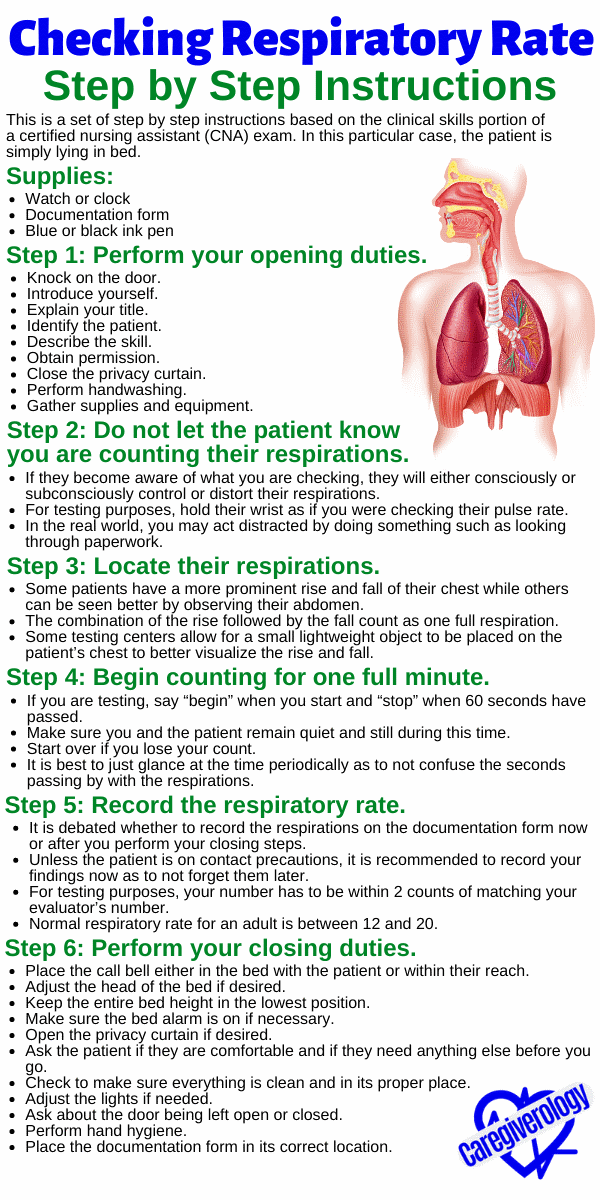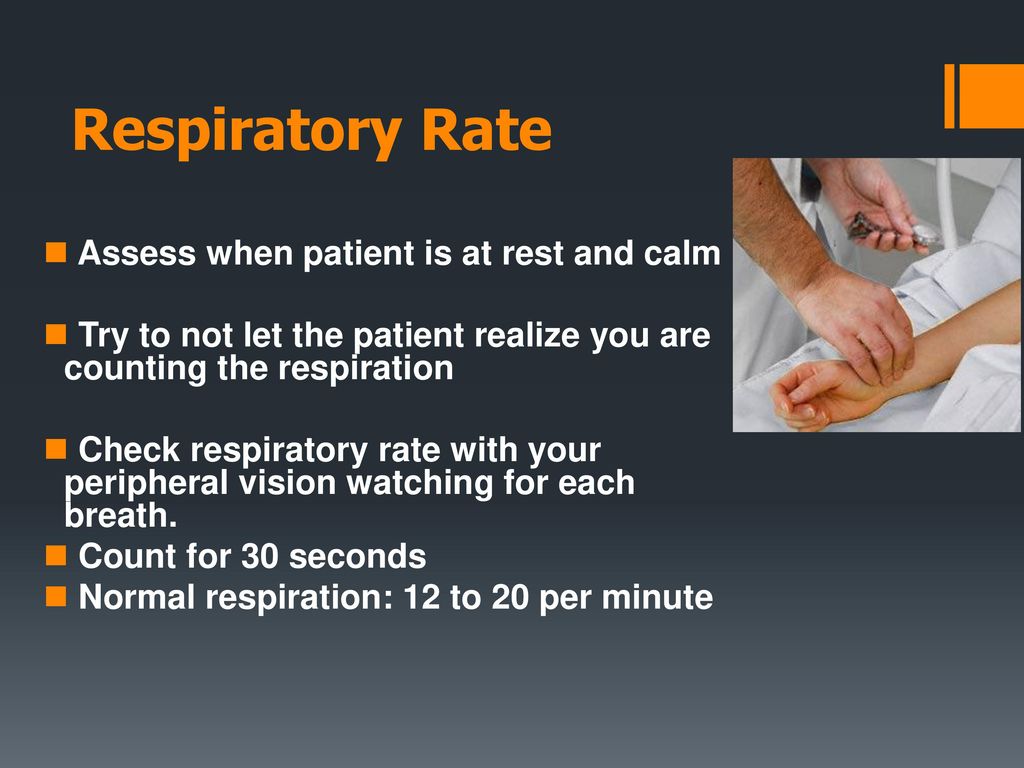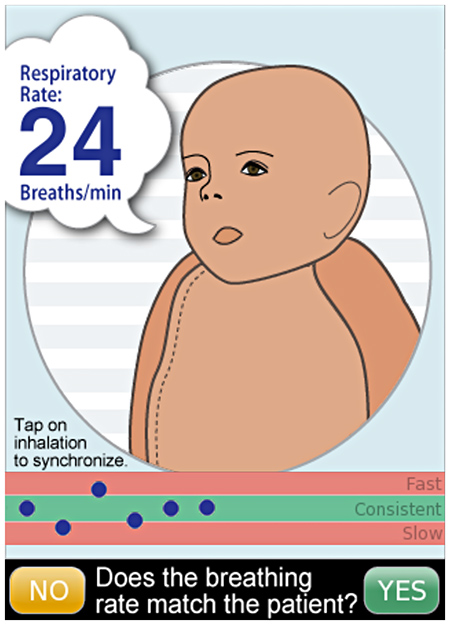How To Take A Patient S Respiration Rate

How to check your pulse.
How to take a patient s respiration rate. It can potentially indicate a more serious condition such as. Gain the patient s consent nursing and midwifery council 2015. Use a stop watch to time one minute. Maintain a constant temperature to prevent shivering which can increase rr.
Use a watch with a second hand and count his breaths for 60 seconds. It s best to take your respiratory rate while sitting up in a chair or in bed. The normal rate is about 12 to 20 breaths in one minute. If he knows he may try to control his breathing.
This can give a false. Count the number of times the person s chest rises and falls during that minute. Begin counting the pulse when the clock s second hand is on the 12. If you are measuring an infant lay the baby flat on her back on a firm surface.
As you count the patient s breaths look and listen for abnormalities rapid or slow breathing shallow or deep breathing irregular breathing noises indications of pain coughing and so forth. Have the person sit up straight. Try to count the other person s respirations without his knowing. Use any of the.
Drugs and emotional states also affect respiratory rates. How do i count a person s respirations. A normal respiratory rate in adults is roughly 12 to 16 breaths per minute. Using the first and second fingertips press firmly but gently on the arteries until you feel a pulse.
Record breathing rate and quality. Mark on your watch a start time with the position of the second hand. Respiratory rate is an important part of your vital signs. It s easiest to mark the start of your count when the hand ticks to.
Count your pulse for 60 seconds or for 15 seconds and then multiply by four to calculate beats per. Community answer one respiration has one complete rise and fall of the chest so you observe the up and down movement of the patient s chest and count the respiratory rate. If you tell the person that you are going to measure her. Record the number of complete breathing cycles per minute on your form or sheet of paper.
Position the patient in a comfortable position.





/what-is-a-normal-respiratory-rate-2248932-v1-5c1abe6846e0fb0001c6284a.png)












